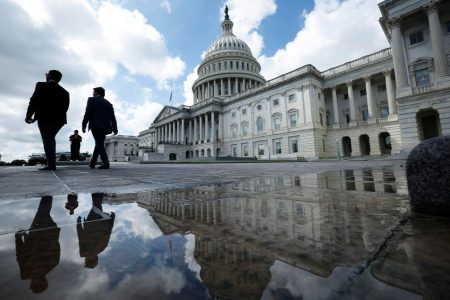One of the major IRS campaigns of the last decade may be entering its windup phase. The campaign is against syndicated conservation easements, which I refer to as the industry based on nonsense. Judge Lauber laid out what has been going on in the recent Excelsior Aggregates decision which I covered. Promoters acquired land for $9.5 million, raised $36 million from investors and then allocated $187 million in charitable deductions to the investors as the land was donated in a sort of two step turkey trot to the National Wild Turkey Federation. Excelsior Aggregates was not an anomaly. The Tax Court docket is bursting with these cases. After a few wins like Excelsior, the IRS announced that it would be sending out settlement offer letters to “certain taxpayers” in July. And it looks like it is a pretty generous offer. One of my sources has sent me a redacted copy of an offer to one of those certain taxpayers.
Caveat
I don’t have the ability to confirm the authenticity of the document any further than I have. The ultimate source is a linked-in post by William Stone, a tax controversy attorney with Morris, Manning & Martin in Atlanta. The strongest evidence for the document being legitimate is that it would be a bit of a project for somebody to have made it up. And to what end? So I believe this is an offer that the IRS has made. Other offers may have gone out for differently situated taxpayers, but no such thing has come my way. For what it is worth IR-2014-174, the announcement says that “The settlement offer requires substantial concession of the income tax benefits and the application of penalties.” (emphasis added). That would seem to imply that there is only one settlement being offered.
What’s The Deal?
This offer is being made to a partnership on a return that does not have a docketed Tax Court case associated with it. The offer is an election that the partnership makes which will by signed by the “Authorized Signer” of the return. Who that is varies by whether the return was subject to TEFRA of the Bipartisan Budget Act of 2015. Non-TEFRA partnerships or those where there was an election out of BBA will require the signature of all partners to close the deal. If there is less than one year on the statute of limitations, an extension of at least one year will be required.
The terms of the deal are that the partnership is not entitled to any charitable deduction, but there will be a deduction allowed to the extent that the partners contributed cash. That strikes me as good, but then it goes from good to great. The IRS will calculate tax due at the partnership level at a rate of 21% with a 5% penalty added on. We’ll get into why that is great later. The partnership must pay the entire tab. If a partner has made a deposit they can request a refund under Revenue Procedure 2005-18. In the case of TEFRA partnerships all partners must “participate in the resolution”.
The Practical Issues
The SCE deals tend to be single transaction partnerships, so most of them are unlikely to have any assets available to pay the tax tab. So where do they get the money? Logically it would seem they have to get it from the partners. But what if some partners don’t want to chip in? And as noted in some cases all partners have to cooperate in the settlement. And this is on a very short fuse. The election has to be filed within thirty days.
Is It A Good Deal ?
Although there were deals that were more aggressive a four to one write-off was pretty common. Say you were a surgeon in Rome GA. You paid in $100,000 and got a $400,000 deduction. At the top bracket that saved you federal tax of $158,400. In the Escambia Aggregate decision it appears investors are being allowed about 7% of the deduction, To make the math easy let’s have you do better and get 10%. That gives you a deficiency of $142,560. The 40% penalty makes the tab $200,000.
Under the deal you are allowed your out of pocket meaning that the disallowance is $300,000. And that is taxed at 21% making the deficiency $63,000 for a total tab of $66,000 with the penalty added. Of course there will be interest on top of that. Nonetheless if back when you did the deal you made a wise investment with your $58,4000 in savings over and above the investment, you will actually have come out ahead for having invested in a really ridiculous deal.
As it happens many people who invest in shelters, don’t put their savings aside, so they might not feel they are getting such a great deal.
Back To The Practicalities
Settling the case by getting a single check from the partnership lifts a lot of administrative burden from the IRS, which might account for what I view as a generous offer. The tax shelters from the late nineties and early oughts which had to be assessed and collected on a partner by partner basis are still generating litigation. The last one I covered was about Action Blizzard CEO Bobby Kotick in 2023, but I haven’t kept my eye peeled for them so much lately. That was about a 2001 deal. IRS can have trouble pushing partnership adjustments to individual partners and significant difficulty in collecting.
On the other hand getting partners to chip in to pay the deficiency might be insurmountable for some sponsors. It would really be great if the IRS manages to make an offer that can be acted on by individual partners.
Other Viewpoints
William Stone, the attorney who released the redacted offer, has some hesitation about the offer. He wrote:
“This settlement offer is a good step in the right direction. However, it cannot be the only step taken. As discussed in detail in previous articles, many SCET are valued correctly meaning the partnership took the appropriate deduction. This settlement, while better than the previous offers, would still be a bad deal for those partnerships who valued their donation properly. As such, the IRS needs to also look at each case on its merits and come to partnership specific settlements for those who don’t accept this offer as I imagine it will be many.”
Stone has a Tax Notes article that argues that IRS has exaggerated the valuation problem. It is based on claimed valuations versus what Tax Court allowed in numerous cases. The cases do not however appear to be about transactions much after 2010 nor are they all or even mostly syndicated deals. I will be surprised if if turns out that there are “many” SCET deals of more recent vintage that turn out to be valued correctly.
Lew Taishoff, who blogs the Tax Court with great intensity, was not as favorably impressed with the generosity of the offer as I was. He wrote me:
“Mr Reilly, May I summarize?
“Throw all weapons, both firearms and handhelds, including knives, baseball bats, out the window where we can see them. Remove and throw out all headgear, vests, backpacks, boots, fanny packs, and belts where we can see them. Come out slowly, one at a time, through the front door, hands behind your bare heads. Maintain a distance of six feet between each of you. Deputies will come up behind you and secure your wrists. Do not resist or speak. We will use force if any of you resist or fail to comply.”
This makes OVDI look like a school picnic.”
I asked him to clarify and he wrote:
“Mr Reilly, enhanced interest for tax-avoidance. The rate of tax is 21%, but the deficiency is the entire amount claimed by taxpayer. The deal says “6. Deficiency interest will be calculated as required by law.” The interest payable at the enhanced rate for taxpayer-motivated avoidance in the case of deals ten years old will be more than the tax due.
Now, of course, if the taxpayer litigates and loses, the highrollers will lose the Section 170 deductions, and get the chops. Their transaction. costs, admins, and legals are gone in any event. And mitigation may open closed years to hit them for the gains they tried to shelter. But that’s down the road, and this deal is today.”
I don’t think Mr. Taishoff and I are reading the offer the same, but I have to take his view seriously. He followed up by commenting that how many people take the offer will be the proof of the pudding, but I don’t know if we will ever find out.
Too Generous?
The way I read the offer the investors are getting close to their entire investment in net tax savings. And in most deals the partnership still owns a fee interest in the encumbered property, which presumably is worth something. Of course if they spent their tax savings rather than investing them, they are upside down due to the interest on the deficiency. Still based on my admittedly rough computations they are getting off for about a third of what a bad Tax Court outcome would yield.
Read the full article here










